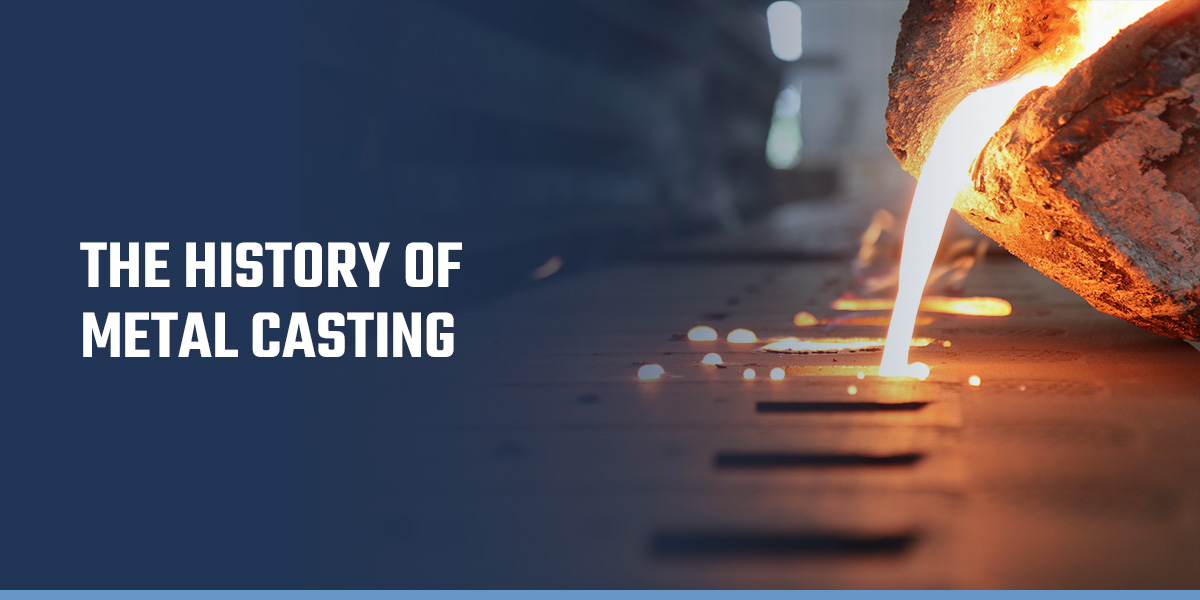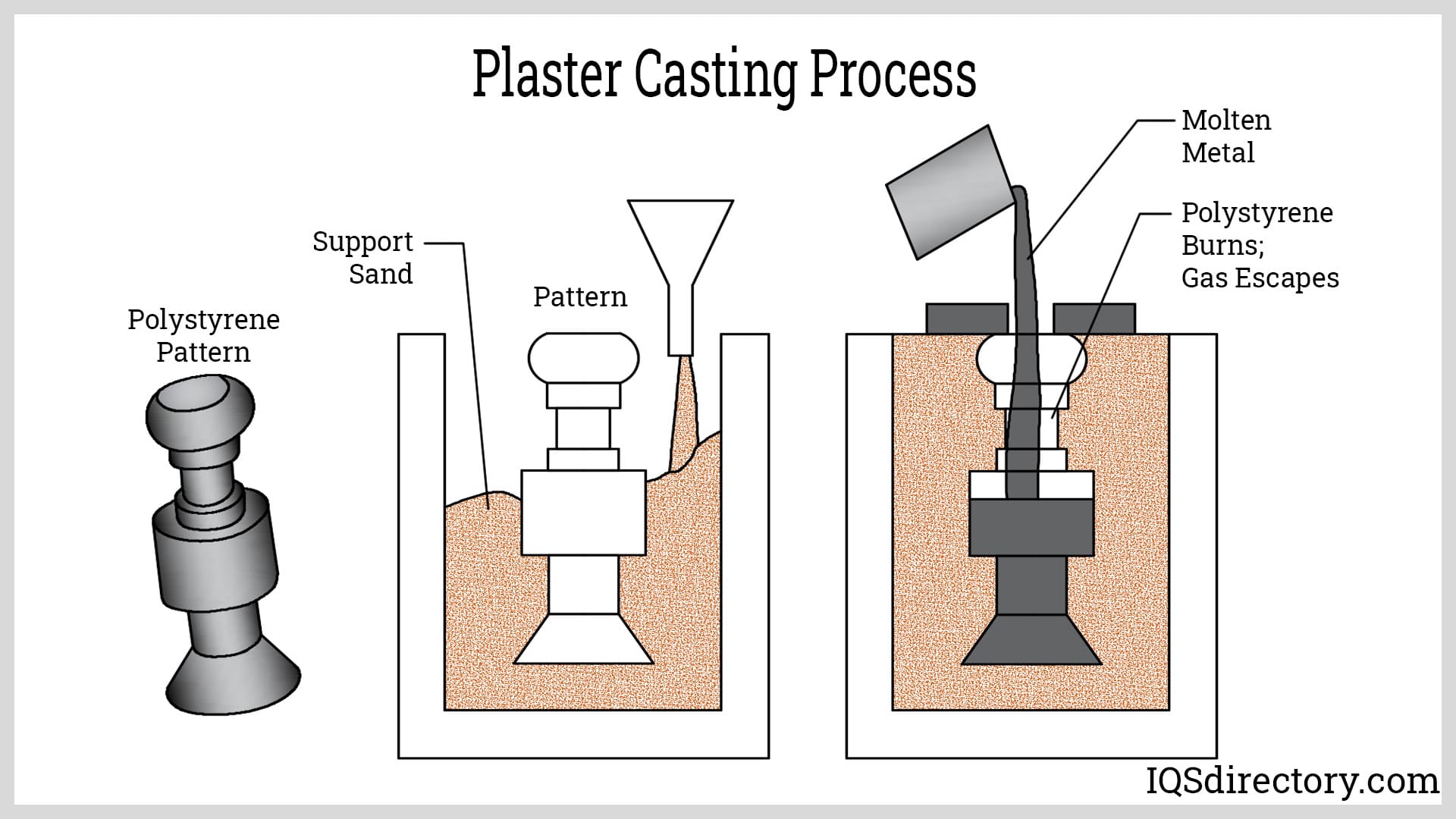Understanding the Steel Castings Process: A Comprehensive Overview for Beginners
The Metal Casting procedure is an essential method in making that changes molten metal right into strong types. Newbies should realize the different techniques involved, such as sand casting and pass away spreading. Comprehending the products, style concepts, and safety and security actions is equally vital. Each aspect plays a vital duty in attaining effective results. As one browses these details, the question of just how to optimize each action for boosted outcomes becomes progressively pertinent.
The Basics of Metal Casting
Although Metal Casting has actually progressed over centuries, its essential principles continue to be regular and integral to the manufacturing procedure. At its core, Metal Casting involves the transformation of molten steel into strong items via various methods. The process begins with the production of a mold, which specifies the shape of the end product. Once the mold is prepared, metal is heated up to its melting point and poured into the tooth cavity. After cooling, the metal solidifies, taking the form of the mold.
There are a number of casting methods, consisting of sand casting, financial investment casting, and die spreading, each with special benefits and applications. The selection of technique depends upon aspects such as manufacturing volume, material kind, and preferred accuracy. As soon as cast, the final item might go through added procedures like machining or surface area treatment to achieve the required coating and requirements. Understanding these fundamentals is essential for anybody thinking about the area of Metal Casting.

Comprehending Products Made Use Of in Steel Casting
Materials play a vital role in the Metal Casting process, affecting the last product's residential properties and performance. Numerous steels are used, consisting of light weight aluminum, iron, steel, and bronze, each offering distinctive qualities fit for specific applications. Light weight aluminum is lightweight and corrosion-resistant, making it ideal for vehicle components. Iron, specifically cast iron, is favored for its excellent wear resistance and durability. Steel supplies high toughness and convenience, typically used in heavy machinery parts. Bronze, known for its rust resistance and machinability, is commonly utilized in marine applications.
Along with the steels, numerous casting products, such as sand, plaster, and ceramic, are made use of to produce molds. Sand spreading, the most common technique, uses silica sand because of its thermal stability and capability to form detailed shapes. Plaster and ceramic molds offer finer information yet may call for even more complex processes. The selection of materials straight influences the efficiency, expense, and high quality of the casting procedure.
The Layout Process: From Principle to Blueprint
The design procedure in Metal Casting begins with the initial principle growth, where ideas are created and evaluated. This is followed by the application of CAD modeling strategies, permitting accurate visualizations of the layout. Lastly, the blueprint finalization steps ensure that all specifications are properly recorded for manufacturing.
Initial Concept Advancement
Initial principle advancement notes an essential stage in the Metal Casting procedure, where ideas change right into concrete styles. During this phase, developers team up with engineers and stakeholders to brainstorm and improve initial concepts. They think about aspects such as capability, aesthetics, and manufacturability, guaranteeing that the design meets the needed specifications and efficiency requirements. Illustrations and harsh drafts are developed to imagine the principles, permitting initial assessments of feasibility and cost-effectiveness. This stage likewise includes identifying materials and potential spreading methods that straighten with the style objectives. Inevitably, first concept growth lays the groundwork for an extensive blueprint, leading the subsequent stages of the casting procedure and guaranteeing a successful shift from principle to reality.
CAD Modeling Techniques
Changing principles right into precise styles, CAD modeling strategies play a crucial role in the Metal Casting process. These methods utilize innovative software program to develop comprehensive three-dimensional models that properly reflect the designated item. By utilizing tools such as parametric modeling, solid modeling, and surface area modeling, developers can adjust dimensions and shapes effortlessly. CAD systems additionally help with simulation and evaluation, permitting for the recognition of prospective problems before production begins. This proactive approach reduces product waste and optimizes the style for manufacturability. Furthermore, CAD designs can be quickly customized, enabling fast models based upon feedback. Fundamentally, CAD modeling works as the foundation of the layout procedure, linking the void in between first concepts and the eventual production-ready designs.
Blueprint Finalization Tips
Following the development of in-depth CAD designs, the next phase includes blueprint finalization, which is essential in translating electronic layouts into actionable strategies for manufacturing. This process begins with evaluating the CAD versions for precision and conformity with requirements. As soon as validated, the measurements, tolerances, and material specifications are meticulously described to guarantee clarity. Integrating notes and notes assists connect necessary information regarding casting processes, surface coatings, and assembly needs. The finalized plan goes through a rigorous approval process, often involving partnership with designers and production groups to address any potential issues. Besides alterations are made and approvals gotten, the plan is officially launched, serving as the fundamental document for the subsequent phases of Metal Casting, including pattern making and mold and mildew design.
The Metal Casting Methods Discussed

Metal Casting methods include a range of techniques used to form molten metal right into desired forms. These techniques differ according to the type of material, complexity of the design, and production volume. Sand casting is among the most usual techniques, entailing the development of a mold from sand to hold the molten steel. Investment spreading, or lost-wax spreading, permits intricate designs by utilizing a wax pattern that is disappeared. Pass away casting utilizes high-pressure injection of liquified metal right into a mold, suitable for mass manufacturing. Various other techniques include long-term mold casting, which makes use of multiple-use molds, and centrifugal spreading, where rotational pressures aid in filling up the mold. Each strategy has its benefits and applications, have a peek at this site making it important for producers to select the ideal technique based upon their specific demands and demands. Understanding these strategies is essential for anyone associated with the Metal Casting process.
Finishing Procedures: Enhancing Your Casted Product

Completing processes play a crucial function in enhancing the high quality and appearance of casted items. Numerous surface area treatment techniques, such as polishing and finishing, are employed to improve sturdiness and aesthetic appeals. Furthermore, quality inspection techniques assure that the end product satisfies specified standards and efficiency requirements.
Surface Area Treatment Strategies
A range of surface area treatment strategies play a necessary function in enhancing the quality and longevity of casted products. These methods consist of methods such as shot blasting, polishing, and coating. Shot blasting effectively eliminates surface blemishes, boosting the visual and useful qualities of the spreading. Sprucing up offers a smooth finish, which is particularly crucial for attractive applications and elements requiring marginal rubbing. Covering techniques, such as electroplating or powder covering, deal extra protection versus rust and wear, ensuring sturdiness. Furthermore, surface area treatments can boost adhesion for succeeding procedures, such as painting or bonding. By employing these techniques, producers can accomplish exceptional surface area top quality, which is critical for the performance and life-span of Metal Casting in various applications.
Top Quality Evaluation Approaches
Efficient quality inspection approaches are necessary for guaranteeing the integrity and performance of casted products after the finishing procedures. Different strategies are used to assess the top quality of Metal Casting, including visual evaluation, dimensional checks, and non-destructive testing (NDT) Visual examination enables the identification of surface defects, while dimensional checks guarantee that items satisfy specified resistances. NDT methods, such as ultrasonic testing and radiographic examination, provide deeper insights right into internal stability without damaging the castings. In addition, mechanical screening, such as tensile and hardness tests, evaluates material buildings - Aluminum Foundry. By using a mix of these approaches, manufacturers can improve item top quality this content and integrity, ultimately leading to better customer contentment and lowered manufacturing prices
Safety And Security Considerations in Metal Casting
While the Metal Casting process uses many advantages, it likewise provides a series of safety risks that need to be meticulously taken care of. Employees in casting facilities are subjected to high temperatures, molten metals, and dangerous materials, which can lead to serious injuries if correct safety measures are not taken. Individual protective tools (PPE) such as heat-resistant gloves, face shields, and protective clothes is vital to reduce risks.
Furthermore, the visibility of fumes and dirt requires appropriate air flow systems to guarantee air top quality - Wisconsin Aluminum Foundry. Normal training on safety methods is vital for all staff members to recognize potential dangers and react effectively. Emergency treatments need to be developed, including fire precaution and emergency treatment accessibility. Upkeep of devices and proper handling of materials additionally add to a safer working environment. By prioritizing these security considerations, Metal Casting procedures can safeguard their labor force and maintain reliable production procedures
Frequently Asked Inquiries
What Are the Environmental Effects of Metal Casting?
Metal Casting can lead to ecological impacts such as air and water pollution, source depletion, and power intake. Additionally, inappropriate waste monitoring and exhausts from foundries contribute to ecological disturbances and wellness risks for neighboring neighborhoods.
How Do I Select the Right Steel for Spreading?
To choose the ideal metal for spreading, one should take into consideration factors such as mechanical properties, deterioration resistance, thermal conductivity, and expense. Reviewing the designated application and environmental problems is essential for perfect choice.
What Are the Usual Flaws in Metal Casting?
Typical problems in Metal Casting consist of porosity, shrinkage, sand inclusion, and misruns. These issues often emerge from inappropriate product choice, insufficient design, or imperfections in the casting process, impacting the final item's top quality and performance.
How Can I Enhance My Metal Casting Abilities?
To improve Metal Casting abilities, one ought to practice continually, research study spreading methods, examine previous projects for issues, seek comments from seasoned wheels, and continually experiment with different products and methods to improve effectiveness and understanding.
What Is the Cost of Beginning a Metal Spreading Company?
Beginning a steel spreading business typically needs an initial investment of $5,000 to $50,000, relying on devices, materials, and facility prices. Elements like area and range can considerably influence general start-up expenses.
The Metal Casting procedure is an essential strategy in making that transforms molten metal into strong kinds. redirected here Novices need to understand the different methods entailed, such as sand casting and die spreading. There are a number of casting methods, including sand spreading, financial investment casting, and die spreading, each with unique benefits and applications. Financial investment casting, or lost-wax casting, allows for complex designs by making use of a wax pattern that is melted away. Various other methods consist of long-term mold casting, which uses multiple-use molds, and centrifugal casting, where rotational forces aid in filling the mold.